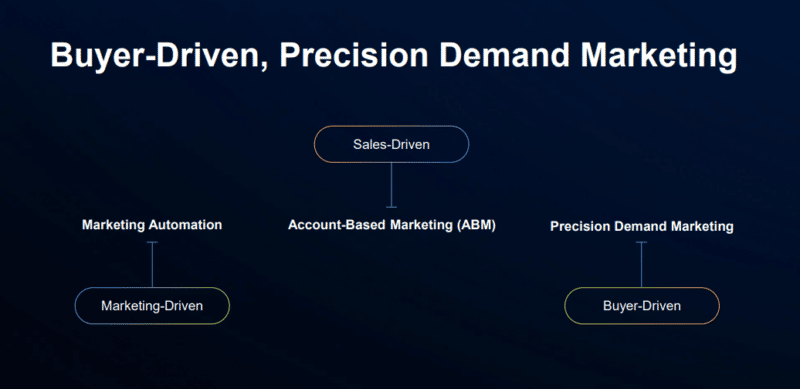“The past two years have wreaked havoc on [marketing] pipelines and exacerbation around getting clean, intelligent data, and passing that data to sales,” said Stephanie Swinyer, head of revenue marketing at Integrate, in her presentation at The MarTech Conference. “If we’re not going to pivot and change based on the buyer, then our competition will.”
Despite the challenges the pandemic introduced, it’s also opened up brands’ eyes to gaps in the buyer experience. Many now see the necessity of employing digital strategies to better reach their target markets. But more than that, it’s reemphasized the need to be buyer-first.
“There’s been a positive business outcome from my point of view,” said Matthew Mullin, senior director of marketing operations and technology at Tenable, discussing his brand’s digital strategy in the same presentation. “I think this shifted marketing organizations. They’re now leaning on things like field marketing to drive leads from digital [channels].”
Even though more brands are adopting new digital strategies, many face difficulties aligning a buyer-first perspective with all of their departments — specifically with marketing and sales. To help with this, here are three ways Swinyer and Mullin believe marketers can help implement buyer-first digital strategies.
Get the daily newsletter digital marketers rely on.
Align marketing processes and tools with sales ops
Marketing teams need to be aligned with sales processes to maximize their efforts. Without alignment, brands will inevitably lose touch with buyers as they navigate sales funnels.
There are many marketing resources available — automation tools, ABM platforms, and more — to help ops teams stay buyer-first. But, choosing the right tools isn’t enough. Marketers must use them to coordinate their work with sales and other departments to gain a full view of customers.

“We’re trying to focus on technology that is going to be the most informative,” said Mullin. “[Technology] that focuses on the buyer POV and gives teams the most information.”
Mullin encourages marketers to make this buyer data as easily accessible as possible for sales teams. Tools like sales enablement platforms are designed for this purpose.

Is your marketing team ready to give the sales team the support it needs to convert more prospects? Explore top sales engagement platforms in the first edition of this MarTech Intelligence Report.
Work with sales reps to accelerate demand
“As marketers, we know who our buyers are,” said Mullin, “But, are you working with your sales reps to pinpoint and target those companies that they want to go after?”
Sales teams often offer marketers a wealth of resources to help accelerate demand. Marketers can more easily connect data and content journeys across multiple channels — activating the buyers that fit the ICP (ideal customer profile) — when sales is kept in the loop.
Here are four steps Mullin recommends marketers take to accelerate demand cross-departmentally:
- Identify current in-market accounts.
- Connect your data, content, and journeys across multiple channels.
- Surround and activate the buyers that fit your ICP.
- Defend spending with proper measurement.
Work cross-departmentally to clean up your marketing data
“Get clean [data] and keep it clean,” Mullin said. “We’ve put a huge focus on making sure that our SDRs [sales development representatives] aren’t wasting time with admin tasks and things like that.”

Taking care of data issues — duplicate information, outdated profiles, etc. — is critical to the success of your brand. What’s more, keeping it clean should be the responsibility of all teams, not just marketing.
“This has been a corporate-wide thing between the marketing ops team as well as the IT team to keep our data clean,” said Mullin.
He added, “This helps make sure that what we’re passing over to our [sales] reps is solid, qualitative data.”







